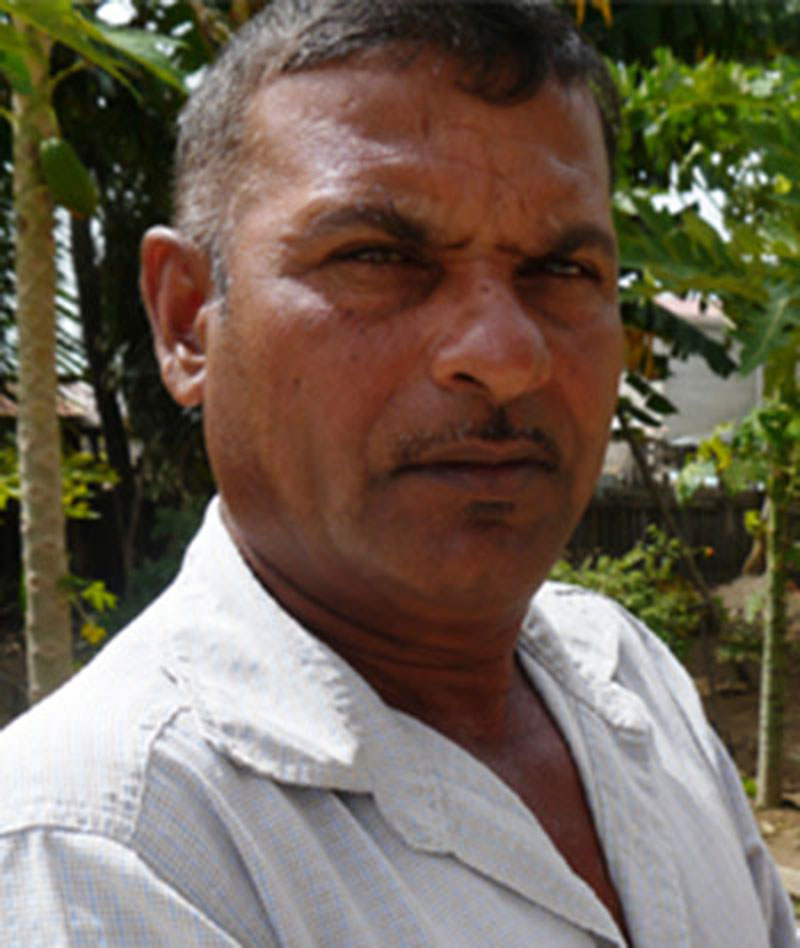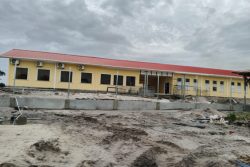Intensive rainfall earlier this year coupled with an infestation of paddy bugs have negatively impacted this year’s rice production as farmers across the country were forced to cut back on the acreage they cultivated.
For the year, paddy production when compared to last year dipped by 198,119 tonnes. In 2021 paddy production stood at 859,452 tonnes as of the middle of this month – a decline from 1,057,571 tonnes in 2020.
To date Guyana has exported some 412,810 tonnes, raking in US$189,232,690 as compared to 549,066 tonnes of rice bringing in US$225,772,431 in 2020.
“As of November we were able to harvest 4,947,804 bags of paddy from 65,904 hectares of rice sown. The number will go up because this accounts for 94 per cent of production. Six per cent of farmers are still in the process of harvesting because they planted late,” Vice President of the Guyana Rice Producers Association, Lekha Rambrich explained to Stabroek News.
He informed that the flooding earlier this year forced farmers to cut back by as much of 50% of their annual cultivation in the large rice-producing regions.
“It was a big setback to farmers in regions Five and Six because they could not plant how they wanted,” Rambrich noted.
Minister of Agriculture Zulfikar Mustapha earlier this year said that rice production and rice byproducts are projected to bring in some US$257.3 million after exports this year. It was forecast that from 188,000 hectares of rice sown, 1,107,580 tonnes of paddy will be harvested, producing 719,927 tonnes of rice of which 649,480 tonnes will be exported. However, these figures are likely to be far less as the floods and pest infestation have impacted the sector.
Paddy bug infestation
Rambrich explained that farmers continue to battle the paddy bug infestation and it has been difficult as they have been unable to bring it under control.
He noted that some 40% of rice has been impacted in Region 5, while 30% of production was impacted in Region 6. Added to that, while there is currently no method available to eradicate the bugs, much more effort must be put in place to help farmers to bring it under control.
The paddy bug infestation has been plaguing farmers mainly on the Essequibo Coast.
“It seems as though there is no answer for our farmers. The entomologist at GRDB [Guyana Rice Development Board] are not delivering, they are saying that they are researching but they are not delivering. The farmers continue to suffer and face setbacks,” he lamented.
From GRPA’s end, Rambrich said that they will be recommending that the GRDB seek international help to aid in combating the plague.
“It’s about 15 years now since we are battling this. It wasn’t so much in the early years but recently it has become detrimental. We continue to feel the brunt and that is billions being lost not only for us but the country as a whole,” Rambrich, who is also a rice producer, said.
Mustapha had said that under the paddy bug management programme, they will work to map out areas that are prone to infestation and work to reduce the time paddy bugs are left untreated. He said too that the GRDB has committed to composing a list of recommended insecticides that can be used to prevent significant infestation.
The Agriculture Minister also stated that they will have daily monitoring of the bug throughout the crop period and in every district as well as conduct demonstrations on treatment and monitoring.
In mid-2020, close to 33,000 acres of rice were under threat on the Essequibo Coast. In 2019, the GRDB had to intensify its spraying programme to assist in managing the paddy bug infestation.
Further, Mustapha pointed out that GRDB extension officers will also focus on monitoring rice problems which have been limiting profitability of production not only in Guyana but across the rice producing countries. On this note, he said that they will deploy officers to monitor the crop during the vegetative stage, right on to its reproductive stage and compile reports.
Added to the woes of farmers in Region Six, he said that they are currently working to address the issue of cattle invasion in rice fields.
The issue he noted is prevalent within the 52 to 74 Neighbourhood Democratic Council districts. He stated that through the Ministry of Agriculture’s intervention, a fence is currently being constructed and farmers are optimistic that it will eliminate the issues.
But despite the challenges, he explained that the sector is in good standing as there is adequate supply of rice for the local and international markets.
He pointed out too that millers with international markets have not signed any new contracts to supply additional rice within the last year and as such are keeping to their current obligations.









